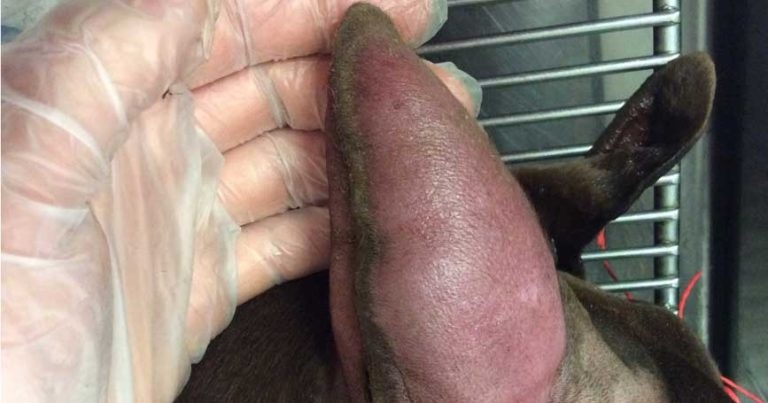10 Nov 2021
Dogs with folded ears have a higher risk of developing aural haematoma compared to breeds with erect ear carriages, according to RVC research.

Image © Zoe Halfacree
Dogs with folded ears are more prone to aural haematoma or ear blood blisters than breeds with erect ear carriages, according to RVC research.
The distressing condition, where ear flaps fill with bloody fluid, is particularly prevalent in 14 breeds, with the bull terrier, St Bernard, English bull terrier, Irish Staffordshire bull terrier and French bulldog among the worst affected.
“Reporting the epidemiology of aural haematoma in dogs and proposing a novel aetiopathogenetic pathway” is published in Nature Scientific Reports and shows one in every 400 UK dogs suffering from it each year – with breeds with folded, or V-shaped drop and semi-erect ear carriages hit worst.
It had previously been thought the condition resulted from blood vessels bursting when dogs shook their head or scratched their ear.
But the team of RVC researchers are challenging this idea, proposing a cartilage-folding hypothesis where repeated folding of the ear flap along the line of cartilage fold within certain types of ear carriages leads to chronic damage and weakness along this fold line. The damage eventually triggers a bleeding episode into the ear flap.
The study was the latest as part of the RVC’s VetCompass programme, and is the largest study to use anonymised veterinary health records to explore aural haematoma in dogs. Clinical records of 905,554 dogs for one-year period were studied, with 2,249 (or 0.25%) affected by the problem.
Key findings are:
Those behind the study hope the research will improve awareness of frequency and susceptible breeds among veterinary professionals.
Dan O’Neill, senior lecturer in companion animal epidemiology at the RVC and lead author of the paper, said: “Humanity evolves when it sees the world in new ways. This study is evidence of the power of veterinary big data to generate a new theory explaining why dogs develop aural haematoma – a disorder that has been recognised in dogs for a century.”
Bill Lambert, health, welfare and breeder services executive at The Kennel Club, said: “These extensive findings importantly help us to identify which dogs are most at risk of developing aural haematoma, which can be a painful disorder among some dogs.
“Ultimately, this research – funded in part by The Kennel Club’s Charitable Trust as part of our mission to make a difference for dogs – should help owners that may need support in spotting the initial signs and seeking appropriate veterinary care, particularly in those breeds identified as being at most risk of being affected.”